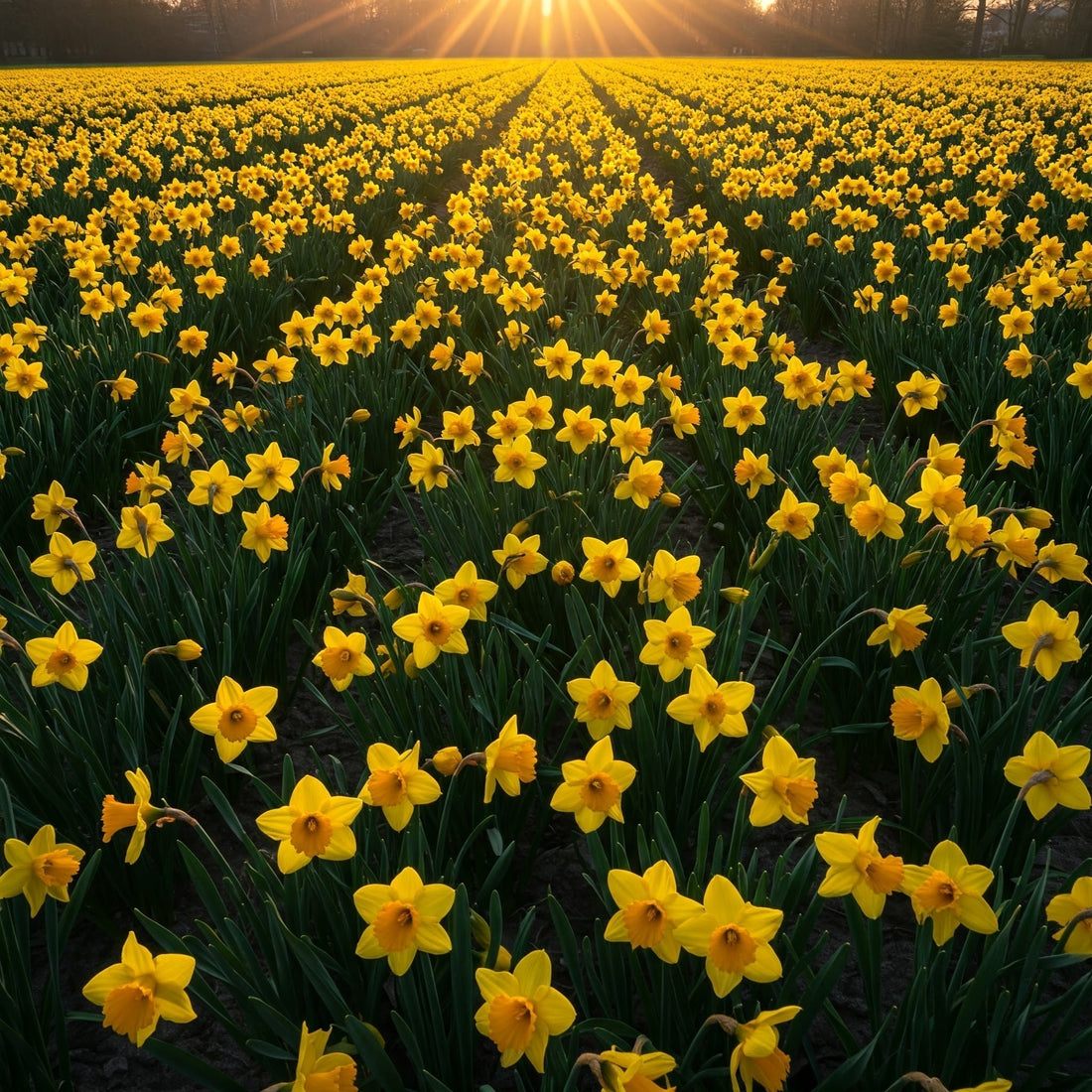
March's Golden Gift: The Daffodil
Share
The daffodil, scientifically known as Narcissus, is deeply associated with rebirth, renewal, and new beginnings. This connection stems from its early blooming period, often peeking through the last remnants of snow. As the days lengthen and the sun's warmth intensifies, daffodils emerge, signaling the arrival of spring and the promise of brighter days.
A History Steeped in Myth and Folklore
The name Narcissus originates from Greek mythology. The story tells of a beautiful but vain youth named Narcissus, who became so enamored with his own reflection that he eventually turned into a flower. While this tale carries a cautionary message, it also highlights the daffodil's striking beauty, a quality that has captivated people for centuries.
In other cultures, daffodils represent different things. In Wales, they are the national flower and are traditionally worn on St. David's Day (March 1st). They symbolize good fortune and are believed to bring more wealth than silver. In China, daffodils are associated with Chinese New Year and are seen as symbols of prosperity and good luck.
Beyond the Yellow
While the classic yellow daffodil is the most recognizable, these flowers come in a stunning array of colors and varieties. From pristine white and creamy apricot to vibrant orange and delicate pink, daffodils offer a diverse palette to brighten any garden or bouquet. There are also double daffodils, miniature daffodils, and those with split coronas, adding to their fascinating variety.
West Coast Daffodil Gardening Tips
Growing daffodils on the West Coast of Canada comes with its own set of considerations. Here are some tips to ensure your daffodils thrive:
- Climate Considerations: The West Coast's mild winters and cool summers are generally favorable for daffodils. However, be mindful of excessive rainfall, especially during the blooming period, which can cause the flowers to rot.
- Soil Preparation: Daffodils prefer well-drained soil. If your soil is heavy clay, consider amending it with compost or sand to improve drainage.
- Planting: Plant daffodil bulbs in the fall, around 6-8 weeks before the first expected frost. Aim for a depth of about 3 times the height of the bulb.
- Sunlight: Daffodils thrive in full sun to partial shade. In coastal areas, consider planting them in a location that receives morning sun and afternoon shade to protect them from strong afternoon winds.
- Watering: Water your daffodils thoroughly after planting and during dry periods. However, avoid overwatering, as this can lead to root rot.
- Fertilizing: Fertilize your daffodils in early spring with a balanced bulb fertilizer.
Daffodils as a Gift of Hope and Joy
Giving daffodils as a gift is a beautiful way to convey feelings of hope, joy, and new beginnings. Whether you're celebrating a March birthday, welcoming the arrival of spring, or simply wanting to brighten someone's day, a bouquet of daffodils is a thoughtful and meaningful gesture.
And that's the cheerful story of...
The daffodil, with its radiant beauty and symbolic significance, is the perfect flower to represent the month of March. As we witness the world around us awakening from its winter slumber, the daffodil reminds us of the power of renewal and the promise of brighter days ahead. So, embrace the cheerful spirit of the daffodil and let its vibrant blooms fill your heart with joy and anticipation for the season to come. By following the tips above, you can enjoy the beauty of daffodils in your own West Coast garden.
Additional Resources
- Learn more about Daffodil symbolism: Daffodil Flower Meaning & Symbolism
- For detailed instructions on growing Daffodils: How to Grow Daffodils
- Explore the fascinating history and cultural significance of Daffodils: Royal Horticultural Society: Daffodils
Happy gardening!🍄
